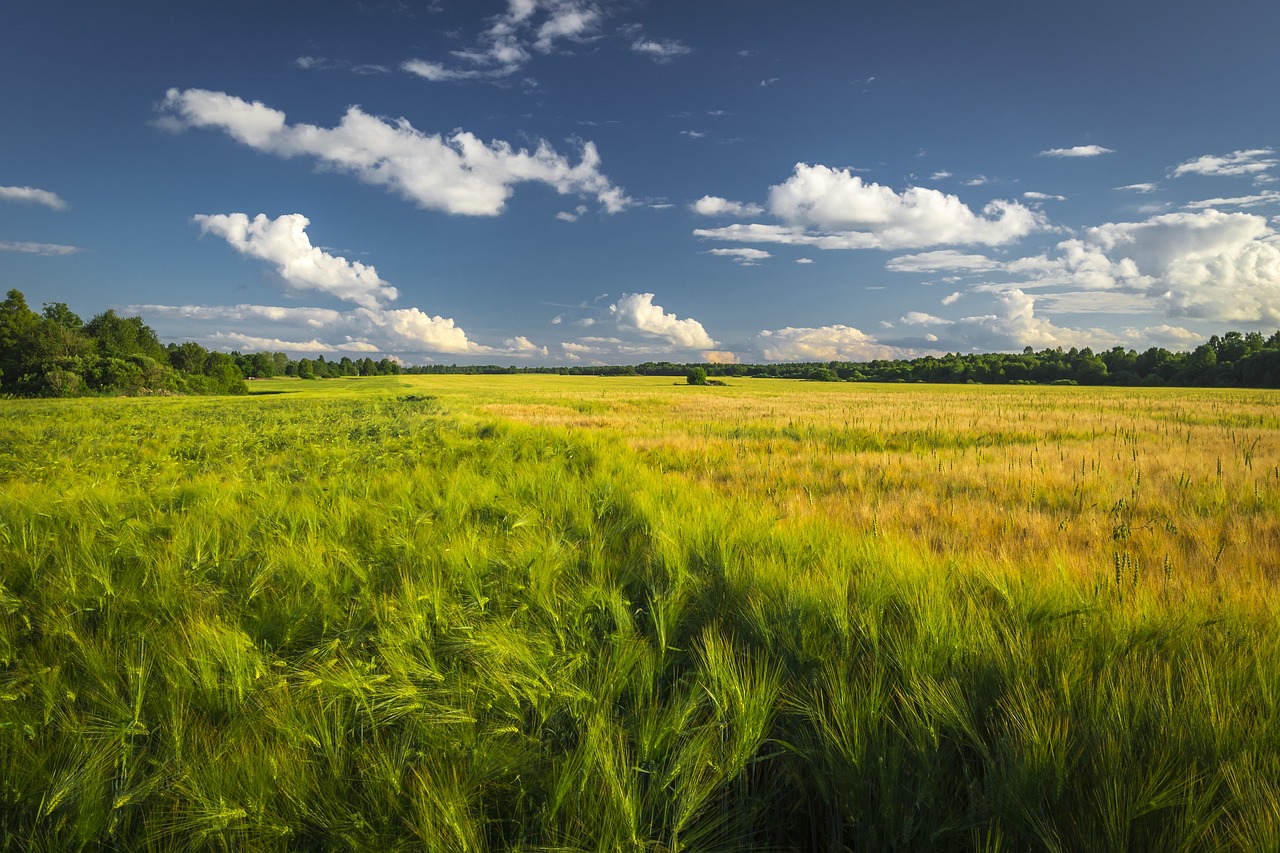High resolution image free download
A wheat field is an expansive agricultural landscape dominated by the cultivation of wheat, one of the most widely grown cereal grains in the world. These fields are characterized by vast stretches of gently swaying wheat plants, often stretching as far as the eye can see, creating a picturesque scene of rural tranquility.
Wheat fields are typically found in regions with temperate climates and fertile soil, where wheat cultivation thrives. The landscape of a wheat field changes throughout the year, with different stages of the wheat growing cycle bringing unique sights and experiences.
In the early spring, wheat fields awaken from dormancy as green shoots emerge from the soil, signaling the start of a new growing season. As the plants mature, they develop into tall stalks with slender leaves and distinctive heads of grain, which gradually transition from green to golden-yellow as they ripen in the summer sun.
During the summer months, wheat fields become a hive of activity as farmers and agricultural workers tend to the crops, monitoring irrigation, applying fertilizers, and controlling pests and diseases to ensure a healthy and abundant harvest. The rhythmic hum of farm machinery can often be heard as tractors plow the fields, seed drills plant the wheat, and combines harvest the ripe grain.
By late summer or early autumn, the wheat plants reach maturity, and the fields are ready for harvest. Farmers carefully time the harvest to maximize grain yield and quality, using specialized equipment such as combine harvesters to efficiently gather the ripe wheat and separate the grain from the straw.
After the harvest, wheat fields may lie fallow or be planted with cover crops to replenish soil nutrients and maintain soil health for future growing seasons. In some regions, winter wheat varieties are sown in the fall to overwinter and resume growth in the spring, providing a continuous cycle of wheat cultivation year-round.
Beyond their agricultural significance, wheat fields are also cherished for their scenic beauty and cultural significance. They evoke images of rural life and agricultural traditions, symbolizing the timeless connection between humanity and the land. Whether viewed from afar or experienced up close, a wheat field inspires a sense of awe and appreciation for the natural bounty of the earth.
Views: 1321
Subscribe to the newsletter:
